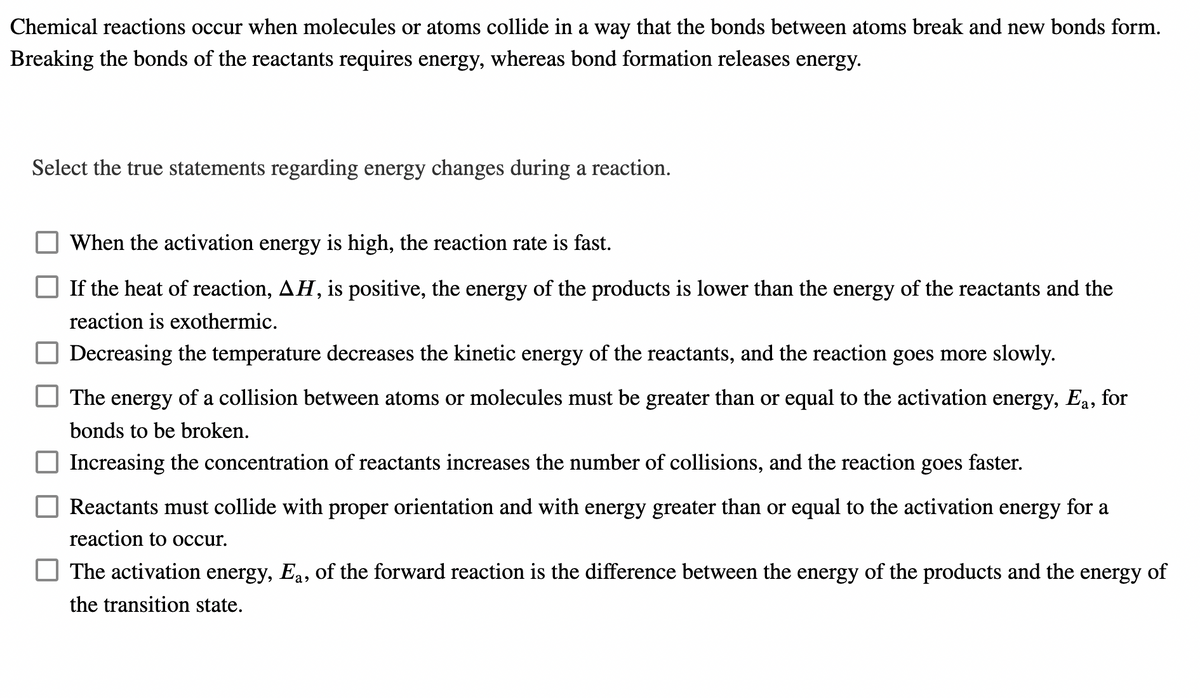Chemical reactions occur when molecules or atoms collide in a way that the bonds between atoms break and new bonds form. Breaking the bonds of the reactants requires energy, whereas bond formation releases energy. Select the true statements regarding energy changes during a reaction. When the activation energy is high, the reaction rate is fast. If the heat of reaction, AH, is positive, the energy of the products is lower than the energy of the reactants and the reaction is exothermic. Decreasing the temperature decreases the kinetic energy of the reactants, and the reaction goes more slowly. The energy of a collision between atoms or molecules must be greater than or equal to the activation energy, Ea, for bonds to be broken. Increasing the concentration of nts increases the number of collisions, and the reaction goes faster. Reactants must collide with proper orientation and with energy greater than or equal to the activation energy for a reaction to occur. The activation energy, E,, of the forward reaction is the difference between the energy of the products and the energy of the transition state. O O
Thermochemistry
Thermochemistry can be considered as a branch of thermodynamics that deals with the connections between warmth, work, and various types of energy, formed because of different synthetic and actual cycles. Thermochemistry describes the energy changes that occur as a result of reactions or chemical changes in a substance.
Exergonic Reaction
The term exergonic is derived from the Greek word in which ‘ergon’ means work and exergonic means ‘work outside’. Exergonic reactions releases work energy. Exergonic reactions are different from exothermic reactions, the one that releases only heat energy during the course of the reaction. So, exothermic reaction is one type of exergonic reaction. Exergonic reaction releases work energy in different forms like heat, light or sound. For example, a glow stick releases light making that an exergonic reaction and not an exothermic reaction since no heat is released. Even endothermic reactions at very high temperature are exergonic.

Trending now
This is a popular solution!
Step by step
Solved in 2 steps









